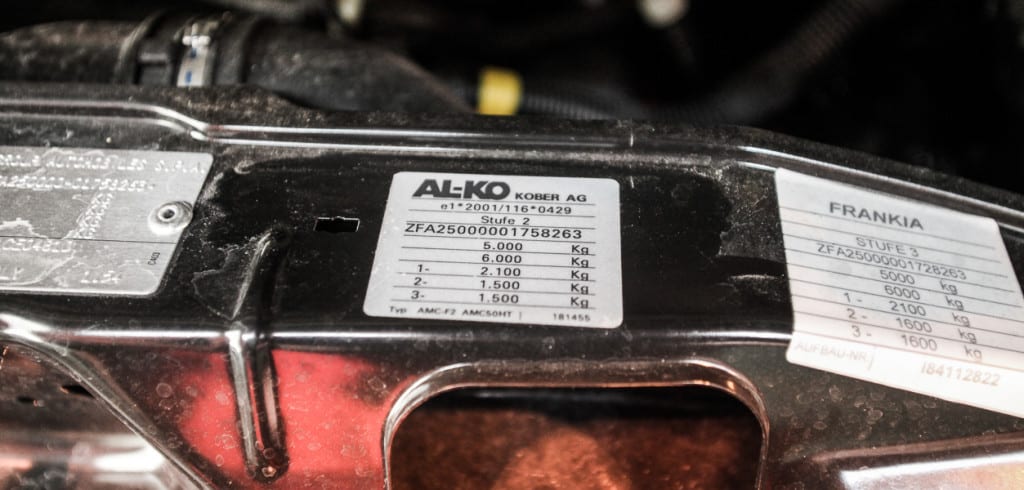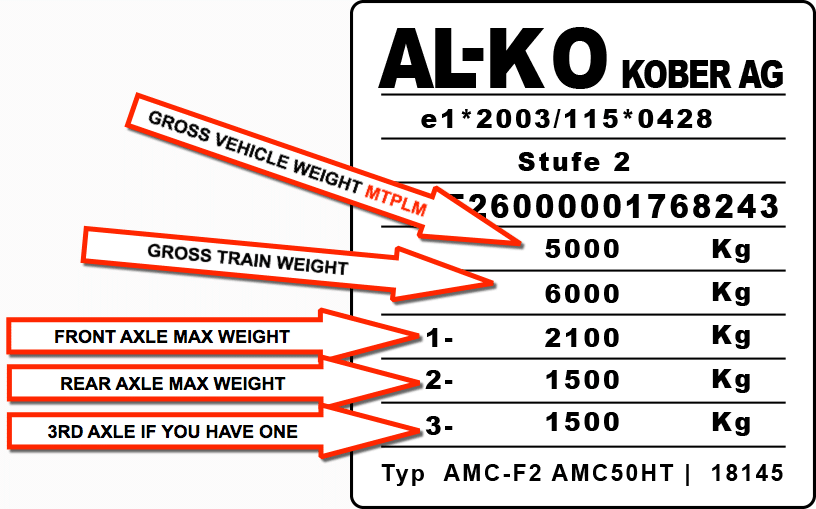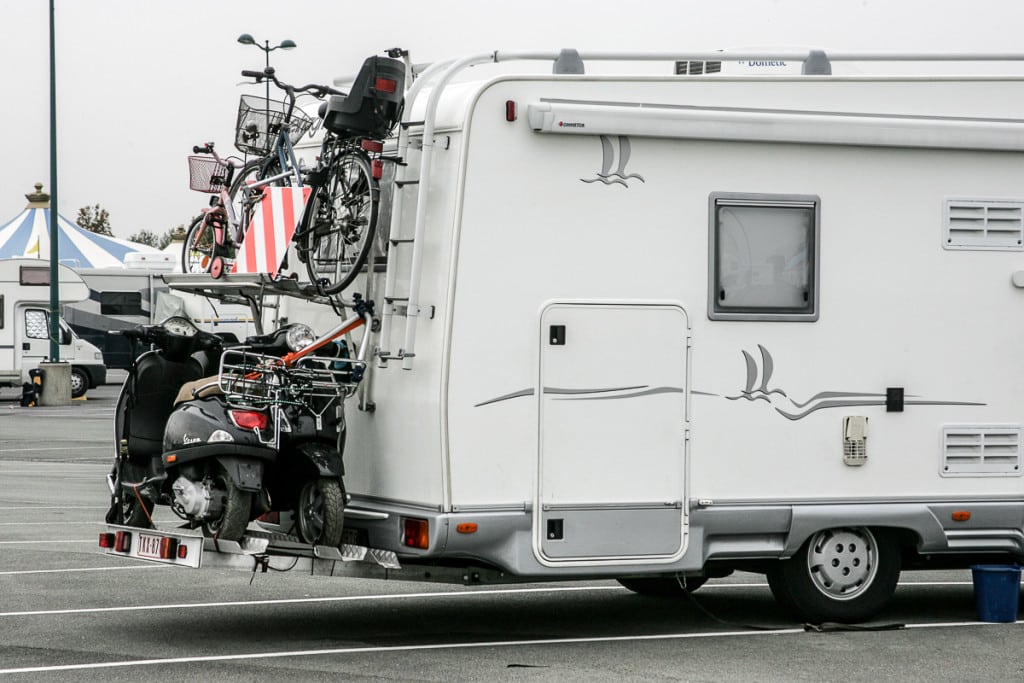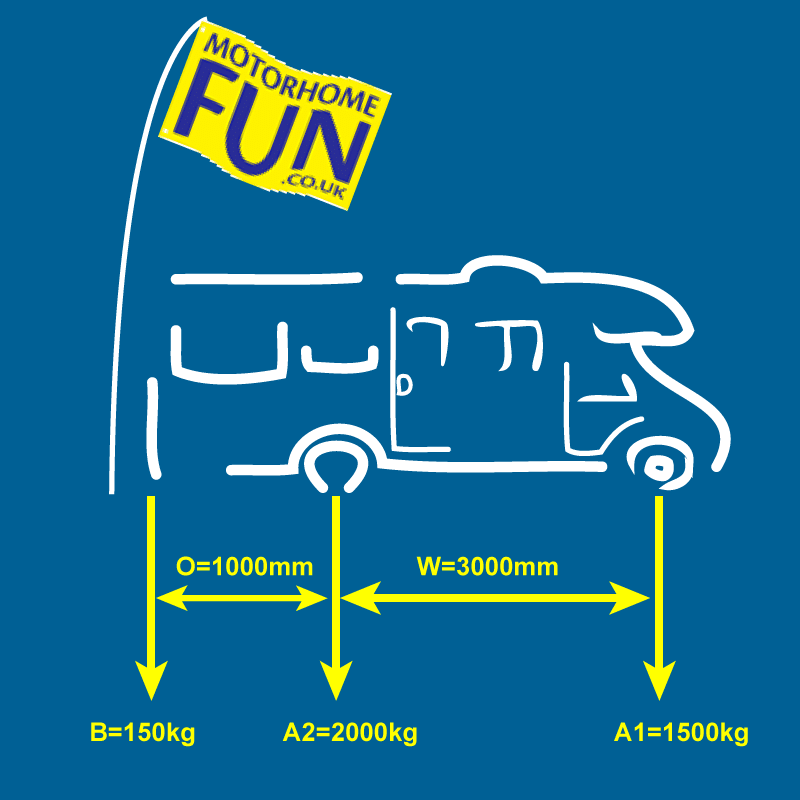Calculating your Motorhome Payload
Some people guess that as many as 1 in 4 motorhomes are loaded beyond the legal limits. Many of those motorhomers have no idea they are breaking the law. They don’t know what they weigh or how much ‘stuff’ they can carry. We should all know what our Motorhome Payload is and ensure we don’t exceed the maximum weight for our motorhome. This is something that we have to calculate ourselves. Yes, the specifications in that new motorhome brochure may well have had a column for motorhome payload but ignore those figures, they are probably wrong.
Every motorhome has certain limits as to the weight it can carry and how the weight should be distributed over the axles. It’s important to observe these limits. Overloading can have a detrimental effect on handling, performance, stopping distances, and the overall safety and stability. Being overloaded and having an accident may well invite your insurers to refuse all or part of a claim!
In the following text, you’ll be introduced to some acronyms and it might all sound a little confusing, but I’ll do my best to explain. If at the end you still have questions, do ask on the forum as it’s an important thing to get right.
When calculating your allowable motorhome payload, you’ll need to understand a few different weight limits and know precisely what they mean. Let’s start with those acronyms.
- MIRO Mass in Running Order The MIRO is the weight of your motorhome as it left the manufacturer and is calculated to include a full tank of fuel and an average driver weight of 75kg, and before any other contents are added.
- MTPLM Maximum Technically Permissible Laden Mass The MTPLM is the maximum amount which your fully laden motorhome can weigh and still be legal to drive. The MTPLM is the MIRO plus the Motorhome Payload.
Motorhome Payload
The payload is the spare weight capacity you need for passengers, equipment and belongings (gas bottles, clothing, water, foodstuff, solar panels, leisure batteries, bike racks, awnings, wind-breaks, etc.) Everything which you will carry to go away.
Your motorhome manufacturer will normally supply you with the maximum payload figures but experience has shown that you should not rely on this. This is especially so with used motorhomes. Just the addition of a wind out awning can add 35kg to a vehicle weight.

Look for the weight plate in your motorhome. It will look something like this above. It might be under the bonnet or in a door jam. This is the plate for a tag axle motorhome. The legal weights you need will be displayed here. Below is an example.

You need to know what you weigh. Load up your motorhome with everything you think you need for the holiday and find a weighbridge, don’t forget the passengers or the dog. Obtaining your total overall weight is OK but it’s best if you can get your axles weighed as well. Some weighbridges can do this automatically, others will need you to roll onto the weighbridge one axle at a time. Once you’ve paid you’ll get a ticket giving you your weights. If you are underweight and within the limits on axles then it is a good idea to keep that read-out in your documents as it might come in handy if you’re ever stopped.
You need to be on or under the top MTPLM figure. If you are over, it’s not the end of the world, you may find plenty of stuff in your lockers is not really needed, maybe you could travel with only a gallon or so of fresh water to get you by. You could, of course, licence permitting, get your MTPLM uprated. An excellent company that will carry this out for you is SVTECH. This company may well be able to get you extra payload, but at a price. Getting the weight uprated can cost over £200. If all else fails You may need to buy a motorhome with more payload, though I’ve heard the 5:2 diet is very good.
Calculating the effect of adding weight behind the rear axle
It’s not uncommon to see motorbikes, invalid buggies, pushbikes, etc. added to a rack at the rear of the motorhome. If you would like to carry items at the rear of your van. Not only do these heavy items eat into your motorhome payload, but it’s important that you understand the impact the added weight will have on your motorhome’s rear axle. Both of your axles have a weight limit and you should never go above this.

Spotted in France. The Overhang is a long one and he’s carrying two cycles and two motorcycles!
While you can up-rate overall weight, getting maximum axle weights changed while possible it is not always straight forward so it is always better to work within the original axle weight specifications.
We may remember learning about pivot points at school. When adding weight behind the rear axle, the back tyre becomes a pivot point and this means that any added weight will increase the load on the rear axle while decreasing it on the front one. (very often the front wheels are the drive wheels)
The diagram below shows the different measurements you need to be able to accurately calculate the effect of adding weight to the back of your motorhome.
Your motorhome’s size measurements should be in your handbook, but you cannot depend upon this, even if you purchase from new, and definitely not if you buy second hand. Supplying dealers and previous owners may have added items that have a significant impact on weight, such as extra batteries, solar panels, satellite dishes, etc. So rather than rely on the handbook, it’s far better if you have your front and rear axle weights calculated at a weighbridge.
Once you know the weight of the rear load you are adding, (don’t forget to include the weight of the bike rack) you can then use the calculations below to work out the additional load on your rear axle and the subsequent decrease on the front. It’s easy to be within your motorhome payload allowance but still be over weight on an axle.

- A1 = existing front axle load (before adding the new rear load)
- A2 = existing rear axle load (before adding the new rear load)
- B = (for Bike) the weight of new rear load
- W = wheelbase (the distance between the front and rear axle centre-lines)
- O = overhang (the distance from the rear axle centre to the centre of mass of the new rear load).
Once you know what the rear load weighs you can do these simple calculations
- New front axle load (new A1) = A1 – [B x (O ÷ W)]
- New rear axle load (new A2) = A2 + B + (A1 – new A1).
In our example, we have a motorhome with a front axle load (A1) of 1500kg and a rear axle load (A2) of 2000kg. The bikes and rack weigh 150kg. The Motorhomes wheelbase (W) is 3000mm and the overhang (O) is 1000mm.
If you have a Tag Axle; W should be measured from the centre of your front wheel to the [centre of the rear-most wheel]* OR [A point in the middle of the two rear wheels]*
*After reading this you can decide the best place to measure.
Put those figures into the above equations and the new front axle load will be: 1500kg – [150 x (1000 ÷ 3000)]. This works out at 1500 – 50 which is a new front axle load of 1450kg.
Now that we have a new A1 figure, The second calculation to get the new rear axle is this: 2000 + 150 + (1500 – 1450) is a new load of 2200kg. In other words, the bikes and rack that weigh in at 150kg have added 200kg to your back axle while taking 50kg off the front axle.
Check this new figure to the maximum axle loadings shown on your vehicle plate. If it’s over, you’ll have to think about maybe carrying lighter bikes. Other possible solutions are having the axles up-rated or carrying the bikes in a garage or even consider using a trailer. With a trailer, you need to use the nose weight of the trailer and carry out the same calculations. You’ll need to also ensure the trailer weight added to your motorhome does not go over your train weight, which is the maximum weight of the loaded motorhome and trailer combined. Your Train Weight should be on your weight plate, just like the illustration above.
Members can now download an excellent spreadsheet made by Revolvor that makes it easy to see if you are loaded safely and legally Click Here to Download

